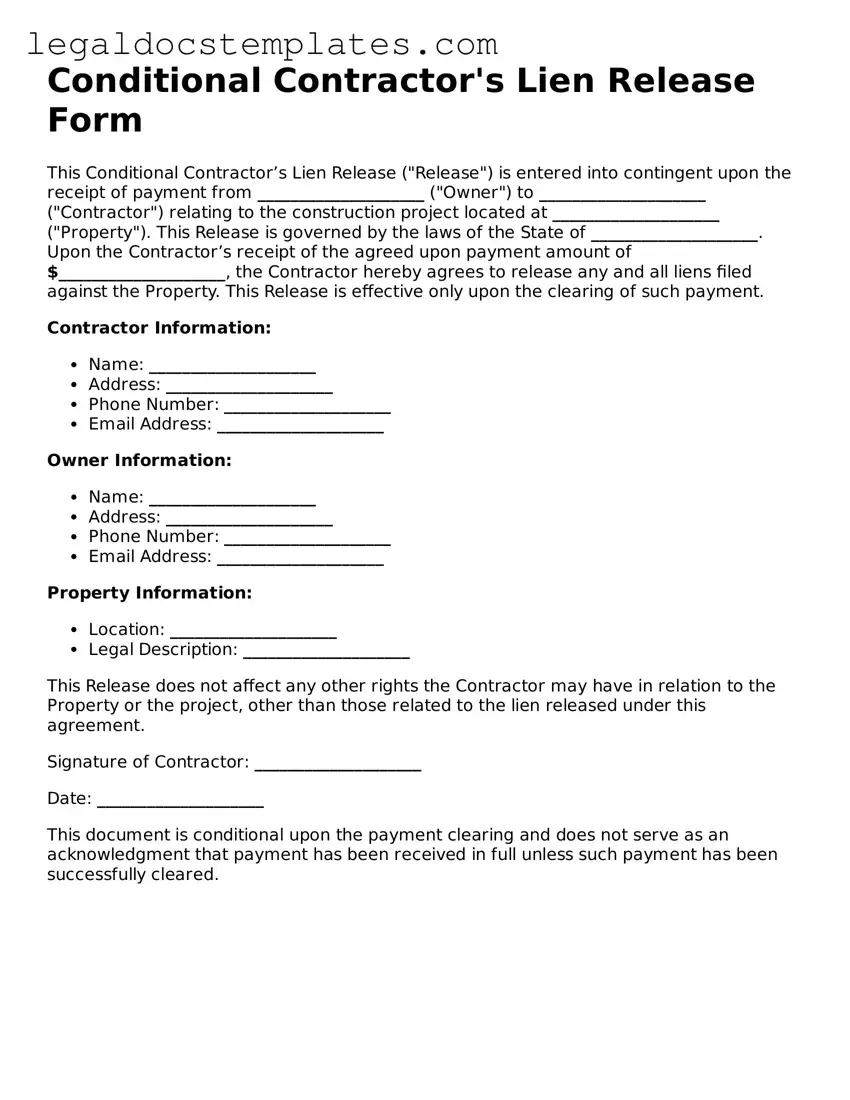Filling out the Conditional Contractor’s Lien Release form requires attention to detail and understanding of its terms. A common mistake is not verifying the accuracy of all the information provided on the form. This includes details like the property owner's name, the legal description of the property, and the amount due. Errors in these critical pieces of information can invalidate the document or lead to disputes later on.
Another mistake is failing to specify the through date correctly. The through date indicates until which point in time the lien rights are waived upon payment. Misunderstanding or incorrectly entering this date can lead to unintentional waiving of rights for work performed outside of the specified period.
Omitting the job description is also a frequent error. A clear and precise job description ensures that the lien release is accurately tied to the specific work or materials provided. This lack of detail can create ambiguity regarding the scope of the lien waiver, potentially leading to legal complications.
Individuals sometimes fail to include the conditional language properly, which is essential for the document to function as intended. The condition typically states that the lien is released upon receipt and clearance of the specified payment. Without this language, the release may prematurely waive the rights of the contractor, subcontractor, or supplier before the payment is secured.
Signing the form without a witness or notary acknowledgment where required is also a critical oversight. Depending on jurisdiction, a notarized signature might be necessary for the document to be legally binding. Skipping this step can render the form ineffective.
Another area where mistakes can occur is in the accurate description of the payment being received. This includes not only the amount but also the form, such as check, cash, or electronic transfer. Incorrectly describing the payment can lead to confusion about whether the conditions for the lien release have been met.
Individuals often overlook the need to provide a copy to all interested parties, including the property owner, the general contractor, and any financing institutions. Failing to distribute the completed form accordingly can result in a lack of acknowledgment of the lien's release status among all parties involved.
Not checking local laws and requirements before completing the form is a significant error. The specifics of lien releases can vary greatly from one jurisdiction to another, including the necessity for particular phrasing or additional disclosures. Ignorance of these local nuances can invalidate the document entirely.
Lastly, waiting too long to submit the form after it is filled out and not tracking its progress can be problematic. Timely submission and follow-up ensure that the lien release is processed efficiently and reduces the risk of delays in payment or further legal actions. Keeping a record of submission and any communications about the form is essential for protecting one’s rights.
